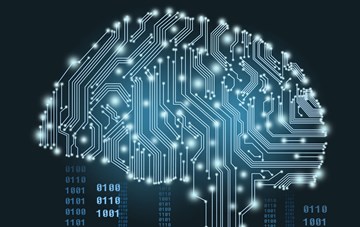Jason Swit, HBA ’11, and nuAI have created a new form of artificial intelligence called Neuroplastic AI, which is modeled after the neuroplasticity of the human brain; allowing it to learn and adapt to new information.
There are many things we take for granted. Especially when they happen so quickly that we barely notice!
Think about the way you see the world, and how quickly you are able to recognize, and name everything within your view; a picture comprised of hundreds if not thousands of items to the tune of 576 megapixels. What exactly happens between our eyes, and our brain (and our mind), is still a mystery.
Now imagine replicating that magic for artificial intelligence.
The common approach is to bombard AI with a tremendous amount of data on the same thing. This is the approach of large language models like ChatGPT that have grown popular over the past couple of years. But what if you could teach an AI system to recognize an object with only a couple of images? Or as the studying analogy goes; what if you could help it understand, and not merely memorize?
That’s exactly what Jason Swit, HBA ’11, of nuAI, is creating under the banner of neuroplastic artificial intelligence, a concept based on the human brain’s ability to adapt and rewire itself to function in a different way. In the most extreme cases, neuroplasticity allows patients with strokes and brain injuries to recover by restructuring the way information travels through the brain.
This powerful new approach aims to create AI models that can adapt and actively learn, just like the human brain, allowing them to continually improve and optimize their performance based on new data and experiences. By mimicking the brain's plasticities, Swit believes these AI systems could become more versatile, resilient, and efficient in solving complex problems and handling diverse tasks.
Creating a brain-like artificial intelligence
 The last time we met Swit in 2019, he and his team at nuAI were working on prepping big data for the upcoming AI revolution. Back then, artificial intelligence was still predominantly something we talked about in relation to computer games, or science fiction. Poor data quality was costing U.S. companies trillions of dollars back then, and Swit was creating artificial intelligence that could automate the data preparation process and bridge the gap between big data and solutions.
The last time we met Swit in 2019, he and his team at nuAI were working on prepping big data for the upcoming AI revolution. Back then, artificial intelligence was still predominantly something we talked about in relation to computer games, or science fiction. Poor data quality was costing U.S. companies trillions of dollars back then, and Swit was creating artificial intelligence that could automate the data preparation process and bridge the gap between big data and solutions.
While Swit wanted to keep the team lean during those interceding years, they were able to work with IBM, and complete the creation of their breakthrough AI cloud engine, nucleus; one that can learn, reorganize and adapt to new information, in the same way a human brain can.
Neuroplastic AI was joining the conversation.
In fact, it was that early work of creating a system that can automatically clean up data that has made nuAI’s system much more efficient at interacting with the vast world of data; much of which is messy and not ready-made for AI. While large language models and complex computer vision algorithms need vast amounts of data spoon-fed just right, nuAI’s approach can interact with it all and doesn’t have to analyze a thousand pictures of squirrels before it can identify what a squirrel looks like.
Providing tools for endless solutions
Even as Swit and the team were building nuAI’s core functionality, they realized that each company and industry would have its own challenges, and creating systems to solve all those problems would have been impossible without significant resources.
However, as the AI revolution exploded with the launch of ChatGPT-3, Swit noticed an appetite for software development kits (SDKs) that provided companies with all the pieces required to create a custom app to meet their specific needs.
“We can create our version of an SDK, nuAIDK, in a certain field of AI, for example, computer vision… and then make this available through our API for enterprises to use.”
And speaking of computer vision, Swit’s team of three, working with just one Graphics Process Unit (GPU), is currently outperforming the industry’s best computer vision AI system, which is powered by one of the largest corporations in the world.
For example, when testing the industry leader’s ability to identify five kayaks in a lakeside image, its AI can only detect two and neither with a certainty higher than 75%. Meanwhile, nuAI’s computer vision AIDK can tag all the kayaks as well as multiple kayakers in the image.
And there’s plenty of potential for nuAI’s computer vision AIDK across a variety of industries. One can imagine it being used to track and analyze line-ups for rides at Disneyland, spot problems with crops by examining real-time images of acres and acres of farmland, or recognize IDs, and information on cheques to improve fraud detection on online financial platforms like Wealthsimple.
In the coming few months, Swit and nuAI will be working on a number of other AIDKs. They are also eager to collaborate with potential investors as they build out the product, hire AI researchers, and increase computing power as they lay out the runway for commercialization.
While investors are excited by the industry’s rapid rise and reach, there’s still a lot of uncertainty on which horses to bet on.
But after years of building and updating their AI model, Swit and nuAI are ready to show the world just how much of a game changer their new variant of artificial intelligence can be!

